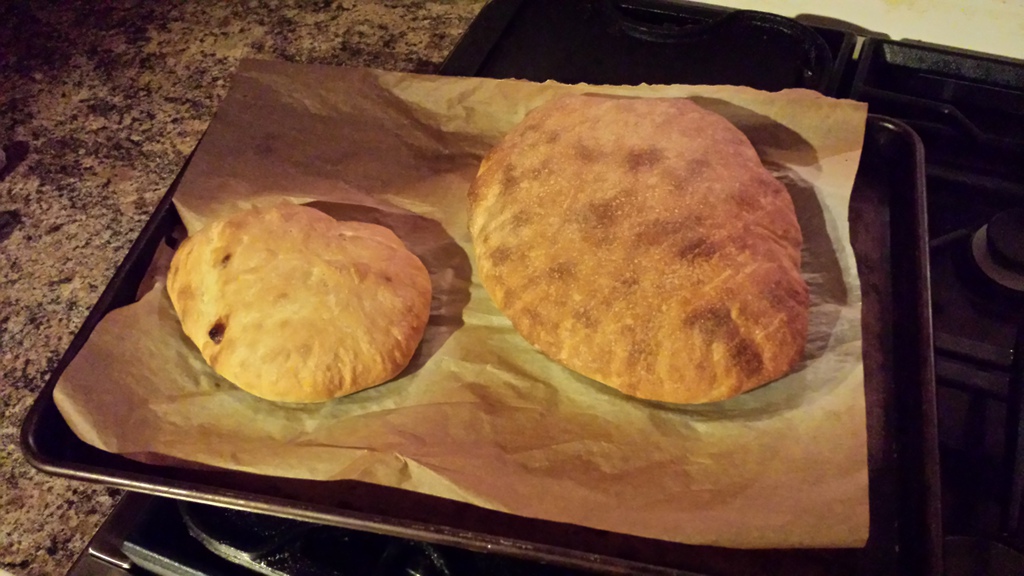
For whatever reason, the kids came home today and decided they were going to make bread. Not my bread, mind you. Their own bread. They were just going to use the same ingredients I use: water, flour, yeast, salt, butter.
For the next 45 minutes or so, they kept walking over to me with bowls full of dough asking my if they were done yet. The first couple of times, the “dough” was more like flour soup. They started adding flour to it and eventually got the proportion of flour to water into a workable area.
Then they wanted to know if they were done mixing it. Their arms were hurting from all the mixing. They kept bringing me lumpy looking bowls full of proto-dough that weren’t anywhere near ready. They started getting mad at me because I kept sending them back for more work.
Finally, I told them that it was good enough. The lass added some kind of chip to hers, possibly a butterscotch chip, possibly a peanut butter chip. I’m still not sure what. The boy wanted to add chocolate chips. I didn’t want to deal with chocolate chip bread, so I told him that probably wasn’t a good idea. Thankfully, he let it go.
They were both pleased as punch when I told them they could let their dough rise. They were both concerned it “wouldn’t work.” But I assured them if they used the yeast and didn’t use too much, it would turn out OK. By the time their would be ready to shape and cook, they’d be in bed so I promised them I’d take care of that part. They both wanted me to shape it into a ball, but the dough was mush to loose to hold that kind of shape. Instead, they got the disc shaped loaves you see above.
No idea how it tastes at this point. That will be for them to find out.